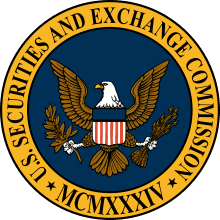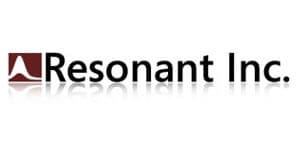
| Smaller Reporting Company Test | Current Rule to Qualify as Smaller Reporting Company | Revised Rule to Qualify as Smaller Reporting Company |
| Public Float Test | Public float of less than $75M | Public float of less than $250M |
| Revenue Test | Less than $50M of annual revenues and no public float | Less than $100M of annual revenues and public float of less than $700M (or no public float) |
The new rules also provide that if a company exceeds the thresholds listed above and therefore fails to qualify as a smaller reporting company, the company will remain unqualified until it meets other lower caps set at 80% of the initial qualification caps as of a date of annual determination. This is designed to avoid scenarios where companies enter and exit smaller reporting company status because of small fluctuations in their public float or revenues. For example, to qualify as a smaller reporting company under the public float test, a company would need to have a public float of less than $200 million if it had a public float of $250 million or more in the prior year and under the revenue test, a company would need to have less than $80 million of annual revenues if it previously had $100 million or more of annual revenues and less than $560 million of public float if it previously had $700 million or more of public float.
| Smaller Reporting Company Test if Initial Thresholds are Exceeded | Current Rule to Qualify as Smaller Reporting Company | Revised Rule to Qualify as Smaller Reporting Company |
| Public Float Test | Public float of less than $50M | Public float of less than $200M, if it previously had $250M or more of public float |
| Revenue Test | Less than $40M of annual revenues and no public float | Less than $80M in annual revenues if it previously had $100M or more of annual revenues; and public float of less than $560M, if it previously had $700M or more of public float |
______________________________________________________________________________
Jonathan Friedman is Partner at the law firm of Stubbs Alderton & Markiles, LLP. Jonathan advises a wide range of both public and private clients, including development-stage, emerging-growth, and middle-market companies as well as angel investors, venture capital firms and strategic investors. Jonathan’s practice focuses on corporate finance, mergers and acquisitions, securities law, intellectual property licensing and general corporate and business matters. Jonathan also has experience forming venture capital funds. Jonathan has represented corporations and other entities in a variety of industries, including Internet and e-commerce, apparel, medical devices, entertainment and high technology.
Jonathan has substantial experience managing strategic transactions, including private equity and debt financings transactions, mergers and acquisitions in the public and private markets, offerings by public companies and angel and venture capital financing transactions. In addition, Jonathan counsels companies in connection with SEC reporting requirements and registrations, federal and state securities laws, corporate governance issues, joint ventures and strategic alliances and commercial contracts. Jonathan also has expertise in advising companies in their formation process.
As part of his practice, Jonathan facilitates cross-border financings, mergers and acquisitions and expansions by companies into new markets and works to promote bi-lateral trade opportunities between Canada and the United States that will result in the job creation, investment connection and trade partnership support.
To learn more about our Public Securities Practice, contact Jonathan Friedman at

Stubbs Alderton & Markiles' attorneys that represented Resonant in the transaction were John McIlvery and Jonathan Friedman.
To read the full press release on Businesswire, click here.
About Resonant® Inc.
Resonant is creating innovative filter designs for the RF front-end, or RFFE, for the mobile device industry. The RFFE is the circuitry in a mobile device responsible for the radio frequency signal processing and is located between the device’s antenna and its digital baseband. Filters are a critical component of the RFFE that selects the desired radio frequency signals and rejects unwanted signals and noise.
About Resonant’s ISN® Technology
Resonant can create designs for hard bands and complex requirements that we believe have the potential to be manufactured for half the cost and developed in half the time of traditional approaches. The Company’s large suite of proprietary mathematical methods, software design tools and network synthesis techniques enable it to explore a much bigger set of possible solutions and quickly derive the better ones. These improved filters still use existing manufacturing methods (i.e. SAW) and can perform as well as those using higher cost methods (i.e. BAW). While most of the industry designs surface acoustic wave filters using a coupling-of-modes model, Resonant uses circuit models and physical models. Circuit models are computationally much faster, and physical models are highly accurate models based entirely on fundamental material properties and dimensions. Resonant’s method delivers excellent predictability, enabling achievement of the desired product performance in roughly half as many turns through the fab. In addition, because Resonant’s models are fundamental, integration with its foundry and fab customers is eased because its models speak the “fab language” of basic material properties and dimensions.
About Stubbs Alderton & Markiles, LLP
Stubbs Alderton & Markiles, LLP is a business law firm with robust corporate, public securities, mergers and acquisitions, entertainment, intellectual property, brand protection and business litigation practice groups focusing on the representation of, among others, venture backed emerging growth companies, middle market public companies, large technology companies, entertainment and digital media companies, investors, venture capital funds, investment bankers and underwriters. The firm’s clients represent the full spectrum of Southern California business with a concentration in the technology, entertainment, videogame, apparel and medical device sectors. Our mission is to provide technically excellent legal services in a consistent, highly-responsive and service-oriented manner with an entrepreneurial and practical business perspective. These principles are the hallmarks of our Firm.
_______________
For more information about the Public Securities practice at Stubbs Alderton & Markiles, LLP contact John McIlvery at (818) 444-4500 or
Stubbs Alderton & Markiles, LLP announces that it represented client Vitesse Semiconductor Corporation (Nasdaq: VTSS) in its successful sale to Microsemi Corporation (Nasdaq: MSCC). Microsemi acquired Vitesse through a cash tender offer and follow-on merger at a price of $5.28 per share, for a total transaction value of approximately $389 million. SAM Attorneys John McIlvery, Jonathan Friedman and Daniel Kim represented Vitesse in this transaction that closed at the end of April.
For more information about the Public Securities Practice of Stubbs Alderton & Markiles, LLP, contact John McIlvery at (818) 444-4502 or
Press Contact:
Heidi Hubbeling
Director of Marketing
(310) 746-9803
The NASDAQ Stock Market, LLC (Nasdaq) has proposed rules to adopt new listing standards for compensation committees and for the selection of compensation advisers in a filing with the Securities and Exchange Commission (SEC) on September 25, 2012. The Nasdaq proposed rules are subject to public comment and SEC approval. Once finalized, these listing standards will implement SEC Rule 10C-1, adopted pursuant to Section 10C(a) of the Securities Exchange Act of 1934 and Section 952 of the Dodd-Frank Act, which directs the national securities exchanges to establish listing standards for compensation committees and the selection of compensation advisers.
Standing Compensation Committee
For the first time, Nasdaq will require a listed company to have a standing compensation committee comprised of at least two members. Recognizing that responsibility for executive compensation decisions is one of the most important responsibilities entrusted to a board of directors, Nasdaq is proposing to eliminate the current alternative of allowing compensation decisions to be made by a majority of independent directors in favor of such decisions being made by a standing committee dedicated solely to oversight of executive compensation. The proposed rules also establish a requirement to adopt a compensation committee charter and to review and assess the adequacy of such charter on an annual basis.
Compensation Committee Composition
As proposed by Nasdaq, compensation committees must be comprised of at least two members. Each member of the compensation committee must:
General Independence. Currently, Nasdaq has a two-part test for independence under Rule 5605(a)(2). In addition to certain categories of directors who cannot be considered independent, the board must make an affirmative determination that the director has no relationship that, in the opinion of the board, would interfere with the exercise of independent judgment in carrying out the responsibilities of a director. Nasdaq has proposed to leave unchanged its two-part test for independence under Rule 5605(a)(2).
Prohibition on Compensatory Fees. Nasdaq has proposed a bright-line test that would prohibit a compensation committee member from receiving, directly or indirectly, any consulting, advisory, or other compensatory fees while serving on the compensation committee, other than compensation for board service or the receipt of fixed amounts of compensation under a retirement plan for prior service with the listed company. This approach is consistent with eligibility standards for service on audit committees.
Company Affiliations. Nasdaq also considered to what extent a director’s affiliations should be considered in determining the director’s eligibility for service on the compensation committee. Distinguishing compensation committees from audit committees, Nasdaq concluded that “a blanket prohibition would be inappropriate for compensation committees,” acknowledging that “it may be appropriate for certain affiliates, such as representatives of significant stockholders, to serve on compensation committees since their interests are likely aligned with those of other stockholders in seeking an appropriate executive compensation program.” While the proposed Nasdaq rules require that boards of directors consider whether any affiliations would impair a director’s judgment as a member of the compensation committee, Nasdaq does not propose any bright-line rules. Also, there is no “look-back” period; consequently, the board need only consider affiliation with respect to relationships that occur during the director’s service on the committee.
Exemptions
Nasdaq proposes to retain its existing exception that allows a non-independent director to serve on the compensation committee under “exceptional and limited circumstances.” If a compensation committee consists of at least three members, one director who is not independent and meets certain other tests may serve on the compensation committee for up to two years if the board, under exceptional and limited circumstances, determines that the director’s service on the committee is required by the best interests of the company and its stockholders.
Smaller Reporting Companies
Nasdaq proposes to require smaller reporting companies to have a compensation committee comprised of at least two Independent Directors. Smaller reporting companies would not need to adhere to the new requirements relating to compensatory fees and affiliation. Smaller reporting companies also would be required to adopt a formal written compensation committee charter or board resolution that includes the same content as other companies; however, they would not need to incorporate into their charters or board resolutions the language in Rule 10C-1 regarding authority to retain and fund compensation consultants and counsel and responsibility to consider the independence of advisers and counsel, nor would they be required to review and reassess the adequacy of the charter or board resolutions annually.
Cure Period
SEC Rule 10C-1(a)(3) requires national exchanges to provide appropriate procedures for listed companies to have a reasonable opportunity to cure any noncompliance with the compensation committee standards that could result in the delisting of the company’s securities. The listing standards may also provide that if a member of the compensation committee ceases to be independent for reasons outside of the member’s reasonable control, that person, with notice by the company to the applicable exchange, may remain on the compensation committee until the earlier of the next annual meeting of stockholders or one year from the occurrence of the event. Nasdaq adopted the SEC’s cure period, modified to provide that if the company’s annual stockholders’ meeting occurs within 180 days following the event that caused the noncompliance, the company will instead have 180 days from the date of the event to cure the noncompliance.
Independence of Consultants and Counsel
SEC Rule 10C-1 provides that compensation committees are not required to select consultants, counsel or other advisers that are “independent,” but instead, in making their selections, compensation committees must take into account the following six factors, which bear upon independence:
Nasdaq concluded that these six independence factors were adequate and did not propose any additional factors in its listing standards.
Anticipated Effective Dates and Transition Period
Nasdaq’s proposed rule relating to the compensation committee’s responsibilities and authority, including the responsibility to consider the independence of compensation advisers, would be effective immediately following SEC approval. The remaining provisions, including compensation committee independence requirements, would become effective on the earlier of the company’s second annual meeting held after the date of approval of the proposed rules, or December 31, 2014.
____________________________

___________________________
For more information about the Public Securities Practice at Stubbs Alderton & Markiles, LLP, contact John McIlvery at or (818) 444-4502.
Sherman Oaks, CA - September 17, 2012 - Stubbs Alderton & Markiles, LLP announced that it advised IRIS International, Inc. (Nasdaq: IRIS), a leading manufacturer of automated in-vitro diagnostics systems and consumables, and a provider of high value personalized medicine solutions, in its agreement to be acquired by Danaher Corporation (NYSE: DHR) for $19.50 per share in cash, representing an approximate 45% premium over the closing price of IRIS's common stock on September 14, 2012.
César M. García, Chairman, President and Chief Executive Officer of IRIS International stated, "The Board of Directors voted unanimously to accept Danaher's proposal as it provides for an immediate compelling cash premium realization for our shareholders. Further, IRIS will benefit from being a part of a larger organization with significant resources to enable the acceleration of its diversified product pipeline strategy."
The Stubbs Alderton & Markiles, LLP team advising IRIS included John McIlvery, Partner and Chair of the Public Securities Practice, Jonathan Friedman, and Sean Greaney.
About Stubbs Alderton & Markiles
Stubbs Alderton & Markiles, LLP is a business law firm with robust corporate, public securities, mergers and acquisitions and intellectual property practice groups focusing on the representation of venture backed emerging growth companies, middle market public companies, large technology companies, entertainment and digital media companies, investors, venture capital funds, investment bankers and underwriters. The firm’s clients represent the full spectrum of Southern California business with a concentration in the technology, entertainment, videogame, apparel and medical device sectors. Our mission is to provide technically excellent legal services in a consistent, highly-responsive and service-oriented manner with an entrepreneurial and practical business perspective. These principles are the hallmarks of our Firm.